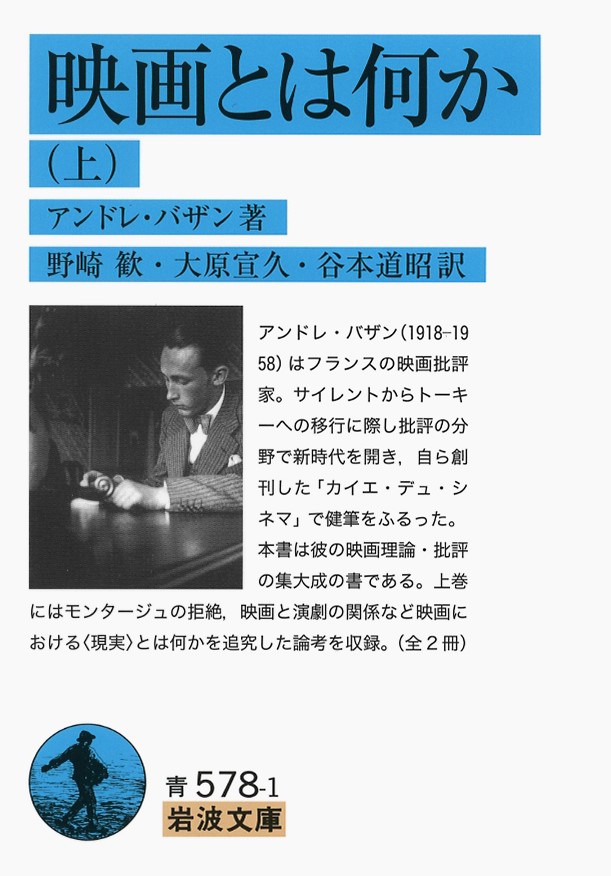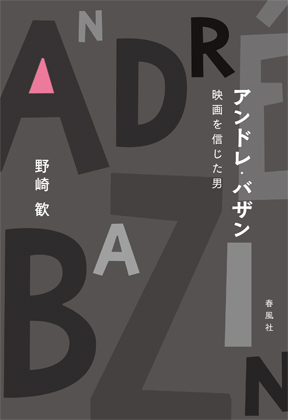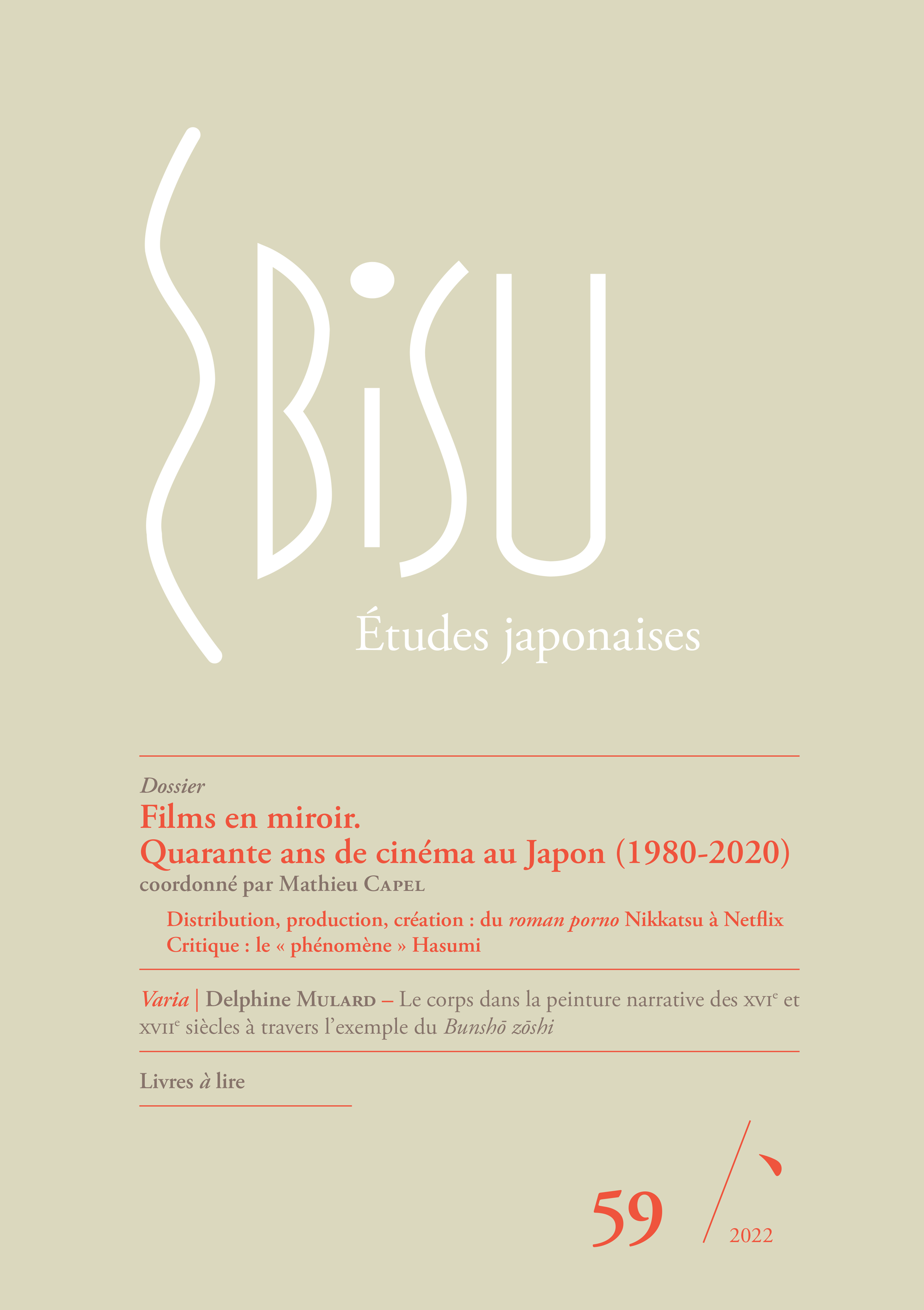
Title
Iwanami Bunko Eiga towa nanika (vol.1/vol.2) (What is Cinema?)
Size
(vol.1) 370 pages, (vol.2) 306 pages, softcover
Language
Japanese
Released
February 17, 2015
ISBN
(vol.1) 9784003357811
(vol.2) 9784003357828
Published by
Iwanami Shoten
Book Info
See Book Availability at Library
Japanese Page
The name of André Bazin (1918–1958) is imprinted on film history as both a major French postwar movie critic and the guardian of the Nouvelle vague (New Wave), a French film movement that still exerts a major influence on filmmakers around the world. His contribution to film thought is so large that one is tempted to make the outrageous declaration that any film research or visual culture theory that does not touch upon Bazin is a travesty.
While I am also tempted to declare that this Japanese translation of his Qu’est-ce que le cinéma? (What is Cinema?) is just that important, there is a reason that I cannot.
Qu’est-ce que le cinéma? was published posthumously in four volumes by Cerf between 1958 and 1962. Each volume has a subtitle—“Ontology and Language,” “Cinema and the Other Arts,” “Cinema and Sociology,” “Neorealism: An Aesthetic of Reality”—and contains a variety of long and short pieces (65 in total).
However, our Japanese translation is based on a 1975 single-volume anthology of 27 pieces selected from these four volumes. This is approximately two-fifths of the 65 original pieces, representing just one percent of the approximately 2,700 pieces Bazin wrote and published during his lifetime. Although it is true that Janine Bazin and François Truffaut were involved in the compilation of this anthology, the number will surely make readers attempting to grasp a general outline of Bazin’s film critique ill at ease.
However, again, even if this translated anthology is just one percent of André Bazin’s corpus, any concerns will surely disappear after one begins to read it, because one finds therein the fundamental questions that run throughout Bazan’s film critique. These include the nature of reality; the relationship between film and other arts such as literature, theater, painting, and photography; the form that film should take in post-World War II society; and the ways in which various genres of film emerged and developed. He confronts these questions head-on with a style that is both dense and clear-cut and contemplations that are sharp and tenacious.
As stated in Bazin’s introduction, the title What is Cinema? does not promise any answers but is rather a question he continued to ask himself. Bazin did not seek simple answers but pushed forward with, widened, and deepened his film contemplations while taking this question to concern film itself. To put it pretentiously, What is Cinema? is a cinematograph— a record of the movement of Bazin’s film critique.
I hope that you will enjoy this Japanese translation, a new version by Nozaki, Ohara, and Tanimoto.
(Written by TANIMOTO Michiaki, Associate Professor (Komaba Organization for Educational Excellence), Graduate School of Arts and Sciences / 2019)



 Find a book
Find a book



